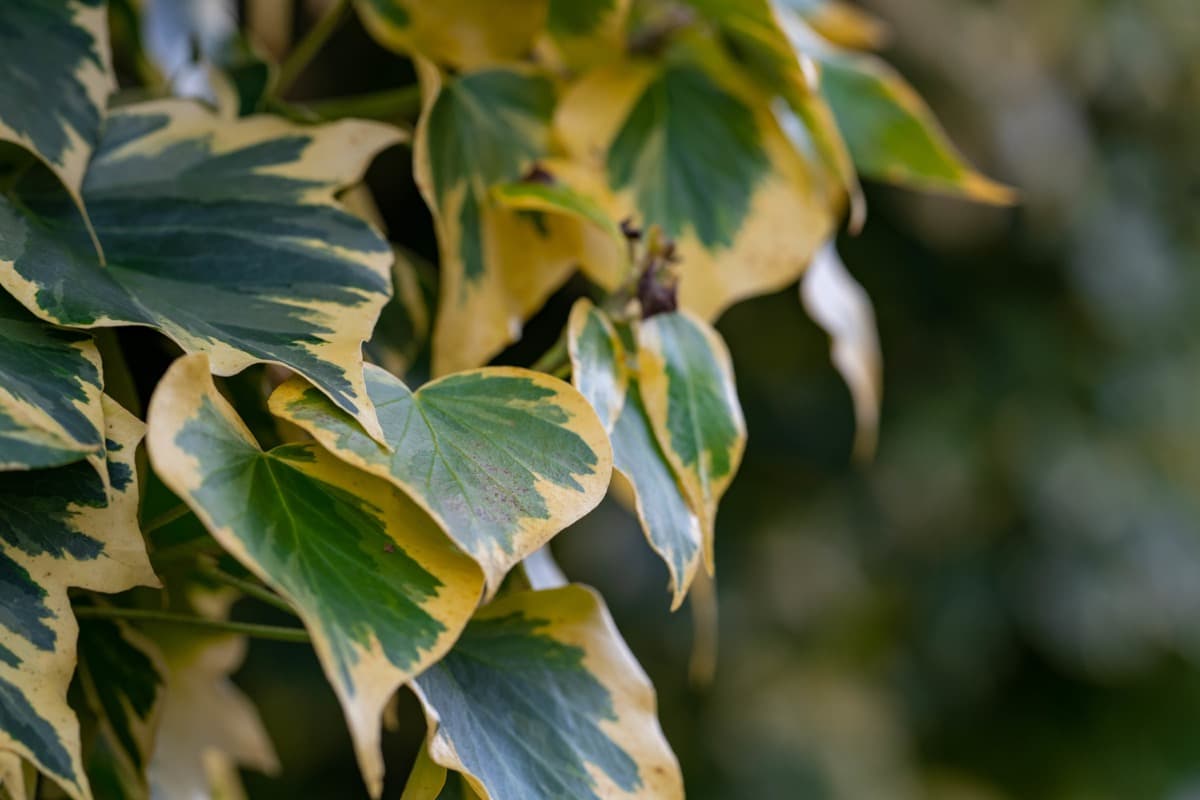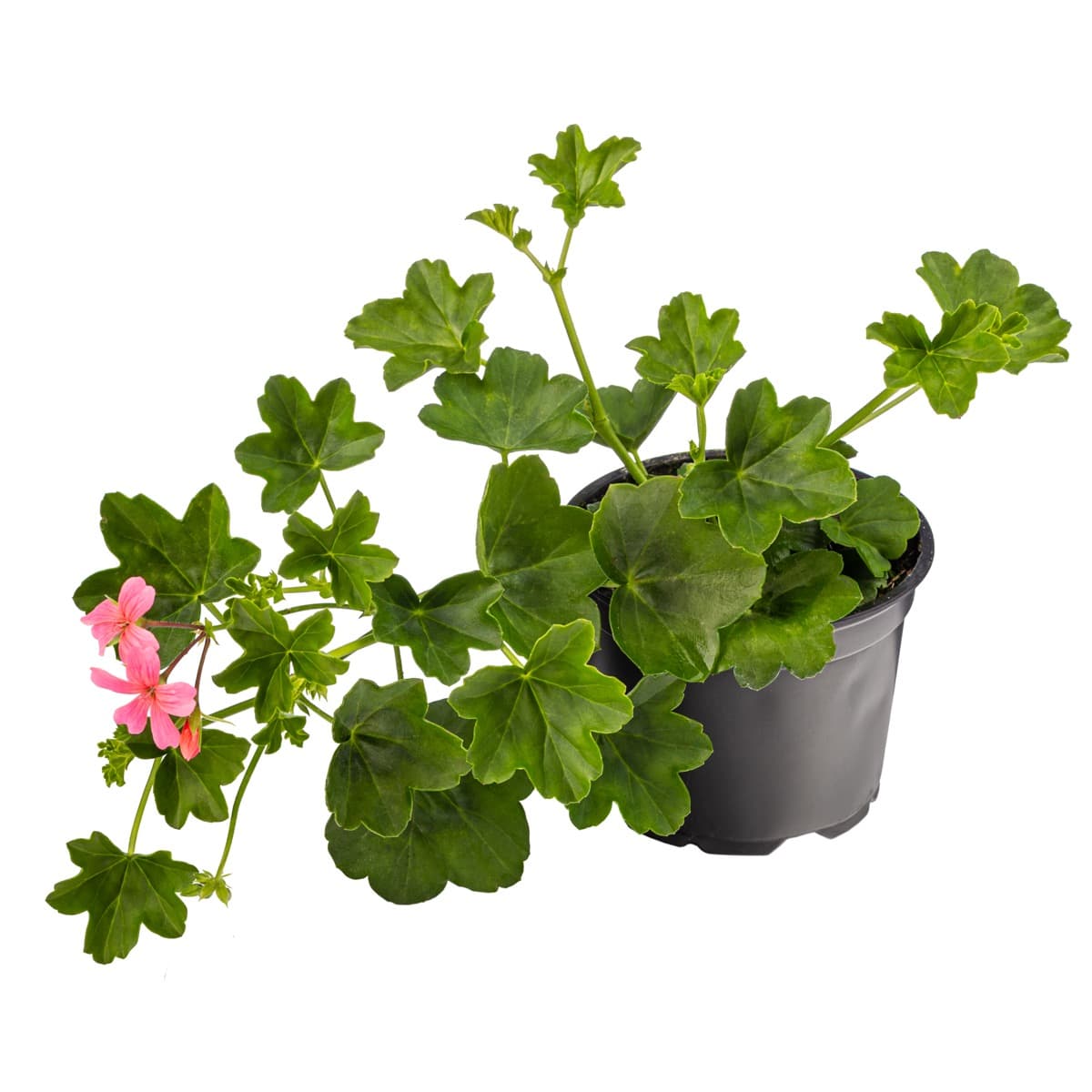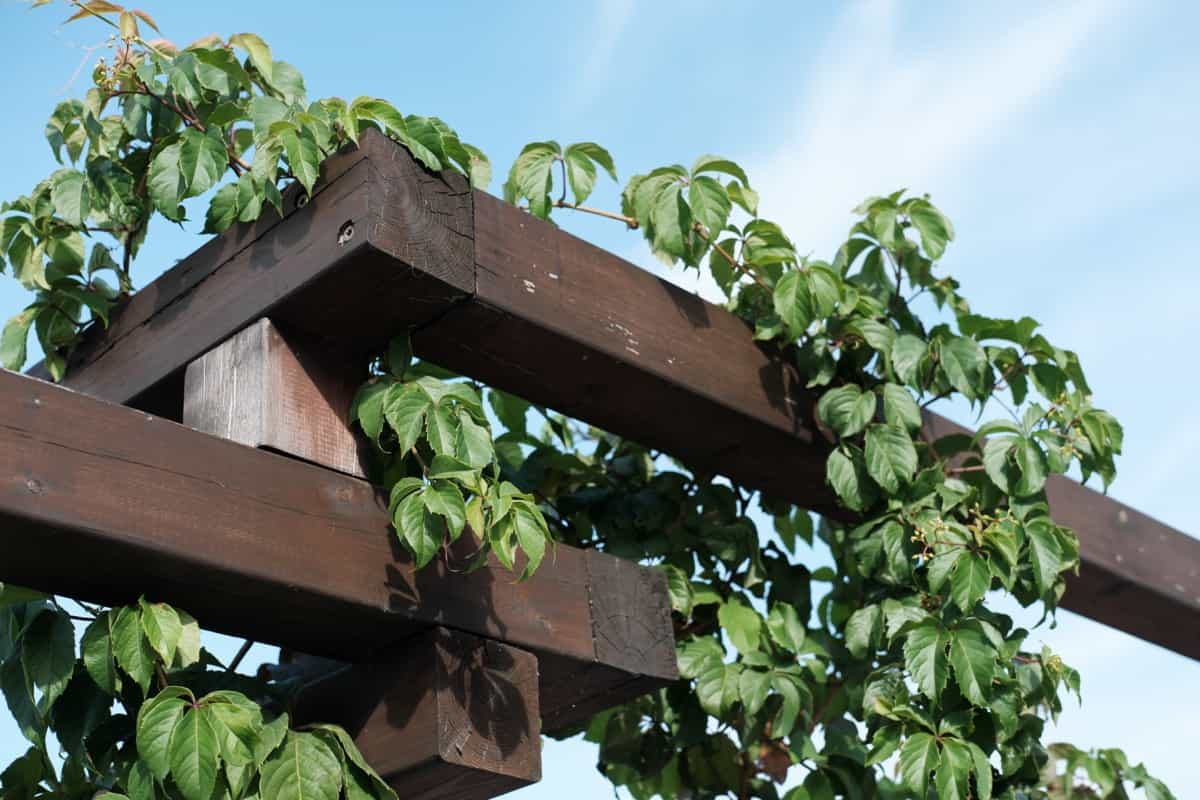There are many types of Ivy to choose from when adding this fast-growing vine to your yard. Whichever type of Ivy you choose, give it plenty of room to grow as it can quickly overtake smaller plants. Each type has distinct characteristics that make it suitable for any landscape. Ivy is perfect for you whether you’re looking for a low-maintenance ground cover or want a unique climbing vine to add privacy to your outdoor space. Ivy is a popular indoor plant because it is easy to grow and care for.
Ivy can be grown in pots or on the ground, thriving in sunny or shady locations. Ivy prefers moist soil, so be sure to water regularly. To encourage growth, fertilize once a month with a general-purpose fertilizer. Ivy can be susceptible to pests, such as spider mites and aphids. Be sure to check your plants regularly and treat them accordingly if you see any evidence of pests. With proper care and maintenance, these popular types of Ivy will thrive in your garden for years.
Top 16 Popular Types of Ivy to Grow at Home
Persian Ivy
Persian Ivy is a fast-growing, evergreen vine with large, dark green leaves, often variegated with white or yellow. Persian Ivy tolerates shade and makes an excellent ground cover or climbing plant. Persian Ivy is a fast-growing, evergreen climbing plant often used as a ground cover or to cover walls and other structures. It has dark green, glossy, lobed leaves and a slightly wavy edge.
In case you missed it: Growing Organic Ivy Gourd in Balcony – Tindora, Kovai, and Coccinia Grandis

Baltic Ivy
Ivy is a popular vine type often grown in yards and gardens. There are many different types of Ivy, but the Baltic Ivy is one of the most popular. The Baltic Ivy is a fast-growing vine reaching up to 20 feet long. It has dark green leaves with white veins running through them. The Baltic
Ivy is a hardy plant that can tolerate cold weather and does not require much care. This tough plant tolerates many conditions, including full sun, partial shade, and shady areas. Baltic Ivy is also drought-tolerant once it is established. The leaf shape is similar to that of other ivies, but the leaves of Baltic Ivy are slightly larger. Baltic Ivy can be propagated from stem cuttings taken from an existing plant.
Irish Ivy
Irish Ivy is a fast-growing, evergreen vine often used as a groundcover or an accent plant in gardens. Irish Ivy prefers full sun to partial shade and well-drained soil. Irish Ivy is a great plant for covering walls or fences. It’s also very low maintenance and requires no watering once established.
An Irish Ivy is a great option if you’re looking for a fast-growing plant that adds color to your home. This plant is also fairly easy to care for, so it’s perfect for beginners. Just keep it away from direct sunlight, which can scorch the leaves. Water your Irish Ivy when the soil feels dry, and fertilize it every month or so during the growing season.
English Ivy
An English Ivy is a great option if you’re looking for a classic, elegant vine to grow in your yard. This fast-growing vine can reach up to 50 feet long, perfect for covering walls or fences. English Ivy is also relatively easy to care for; it prefers partial sun and moist, well-drained soil. However, English Ivy can be aggressive and invasive, so give it plenty of room to grow. English Ivy has small, dark green leaves that are shaped like hearts. This vine prefers to grow in shady areas with moist soil.
In case you missed it: Growing English ivy Plant (Hedera helix) – A Full Guide

White-and-Green Variegated English Ivy
The white-and-green variegated English Ivy is one of your yard’s most popular growing types. This variety of Ivy has variegated white and green leaves, meaning they have different colors. The leaves of this Ivy can grow up to six inches long and three inches wide. The stems of this Ivy are also variegated, with a green and white coloration. This Ivy is a fast-growing plant, perfect for covering walls or trellises quickly.
Yellow-and-Green Variegated English Ivy
If you’re looking for a beautiful and versatile Ivy to add to your yard, look no further than the yellow-and-green variegated English Ivy. This type of Ivy is perfect for covering walls, trellises, and other structures in your garden. It can also be used as a ground cover or in hanging baskets. The variegated leaves of this Ivy add interest and contrast to your garden, and the plant is relatively easy to care for.
Tree Ivy
Many types of Ivy can be grown in your yard, but Tree Ivy is one of the most popular. This type of Ivy is perfect for covering fences, trellises, and other structures. Tree Ivy is also relatively easy to care for, making it a great choice for those new to gardening. Ivy is a popular climbing plant that can be found in many yards. Tree Ivy is a fast-growing plant that can quickly cover a tree trunk or fence. It has dark green leaves that are often variegated with white or yellow. Tree Ivy is easy to care for and requires little maintenance.
Ivy Geranium
Ivy Geraniums are a type of Ivy popular for their ability to grow in many climates. Its vigorous climber can reach up to 3 feet long, and its leaves are dark green with a glossy shine. The flowers of the Ivy Geranium are white or pink, and they bloom from late spring to early summer. Ivy Geraniums are one of the most popular types of Ivy to grow in yards. They are known for their beautiful blooms and stunning foliage. Ivy Geraniums are easy to care for and make a great addition to any garden.
In case you missed it: How to Grow and Care for Geraniums in Pots: A Beginners Guide to Planting to Harvesting

Swedish Ivy
Swedish Ivy is a fast-growing, evergreen vine that can reach 3 feet long. The leaves are oval-shaped and have scalloped edges. Swedish Ivy produces small, white flowers in the summer. Swedish Ivy is relatively easy to care for and can be propagated from stem cuttings. It has dark green, glossy, oval leaves with scalloped edges.
Swedish Ivy produces small, white flowers in the summer. This evergreen vine is easy to care for and can thrive in various conditions. Swedish Ivy is a fast-growing plant that can quickly cover a bare wall or fence. The leaves are dark green and glossy, and the plant produces small white flowers in the spring. Swedish Ivy is low-maintenance and easy to propagate, making it an ideal plant for beginners.
Algerian Ivy
Algerian Ivy is a fast-growing, evergreen vine reaching 10 feet long. It has large, glossy leaves that are dark green with light green veins. Algerian Ivy is tolerant of a wide range of conditions, including full sun and partial shade, making it a versatile plant for the home garden. This vine does best in moist, well-drained soils and can be propagated from stem cuttings. Algerian Ivy is a fast-growing plant that is relatively easy to care for. It is important to keep this plant well-watered, as it will start to droop if it becomes too dry. This type of Ivy is also relatively tolerant of drought and salt spray.
Variegated Algerian Ivy
Variegated Algerian Ivy is a fast-growing, evergreen vine prized for its beautiful, variegated leaves. The leaves are dark green with white margins and are distinctly glossy. While it is commonly grown as a groundcover or trailing plant, it can also be trained to climb walls and trellises. Once established, Algerian Ivy is relatively drought tolerant but will perform best with regular watering.
Boston Ivy
Boston Ivy is a beautiful, fast-growing vine that can add interest and dimension to your yard. When planting Boston Ivy, choose a location that gets plenty of sunlight. This vine does best in full sun to partial shade. Make sure the soil you plant in is well-drained. Boston Ivy doesn’t like soggy soil, so make sure your planting area has good drainage. Water regularly during the growing season, especially if the weather is dry.
In case you missed it: How to Grow and Care for Boston Fern Plant in Pots: A Beginners Guide

Once established, Boston Ivy is fairly drought-tolerant but will need regular watering during its first year or two after planting. Fertilize once or twice a year with an all-purpose fertilizer. This will help keep your Boston Ivy healthy and vigorous. Trim as needed to keep the vine under control and to look tidy. You can also train Boston Ivy to grow on trellises or other structures if you want them to take on a particular shape or form.
German Ivy
German Ivy is a perfect choice if you’re looking for an Ivy that will make a statement in your yard. This lush, evergreen vine can grow up to 20 feet long, making it ideal for covering walls, fences, and other structures. German Ivy is known for its beautiful clusters of small white flowers in spring and summer.
It has glossy, dark green leaves three to five inches long and two to four inches wide. German Ivy produces small, yellow-green flowers in the fall, followed by black berries. This vine prefers full sun to partial shade and well-drained soil. It tolerates various soil pH levels and can grow in poor, rocky soils. German Ivy is an aggressive plant that can quickly cover walls, fences, and other structures.
Five-Leaved Ivy
Five-Leaved Ivy is a common type often seen growing on buildings or fences. It is a vigorous climber with glossy, dark green leaves with five lobes. The flowers are small and greenish-white, and the berries are black. This Ivy is not as tolerant of cold weather as other types, so it is best grown in warmer areas. Ivy is a popular choice for ground cover or to add interest to gardens and yards.
There are many types of Ivy, each with its unique leaf shape and growth habit. Five-Leaved Ivy is a common type of Ivy that is often seen growing in the wild. This fast-growing Ivy has shiny, dark green leaves that are deeply lobed and have five leaflets. Five-Leaved Ivy can be invasive and difficult to control, so it is best suited for growth in areas where it can be contained.
Devil’s Ivy
There are many different types of Ivy that you can grow in your yard, but one of the most popular is Devil’s Ivy. This type of Ivy is known for its fast growth and ability to thrive in both sun and shade. Devil’s Ivy is also a great option if you want an easy Ivy to care for. This type of Ivy can grow up to 10 feet, so covering an area won’t take long.
In case you missed it: Growing Hydroponic Money Plant (Devil’s Ivy/Pothos)

Devil’s Ivy is also tolerant of sun and shade, so you can place it in an area that gets either type of light. Caring for Devil’s Ivy is relatively easy. This type of Ivy prefers to be kept on the drier side, so be sure to water it only when the soil is dry to the touch. You will also want to fertilize your Devil’s Ivy every few months to help it grow quickly.
Grape Ivy
Grape Ivy is a fast-growing, woody vine commonly grown as an ornamental plant. Grape Ivy can reach 10 feet long and has compound leaves with five oval-shaped leaflets. The leaves are dark green and turn crimson in the fall. This vine also produces small, greenish-white flowers in the summer, followed by blue or blackberries. Grape Ivy is a woody vine known for its rapid growth and climbing ability. Grape Ivy is a popular choice for covering fences, trellises, and other structures in the landscape.
Conclusion
There are many different types of Ivy to choose from, and each has its unique beauty that can be used to create a stunning landscape in your yard. Whether you’re looking for an ornamental variety or something more functional, there’s sure to be an Ivy perfect for your needs.
With careful maintenance, the right type of Ivy can enhance your outdoor space and add lasting value. There are wide varieties of Ivy available to choose from for your home. Deciding which is right depends on the look and feel you want, how much maintenance it will require, and whether or not it is safe for your pets.
- How to Grow Hibiscus from Flower
- Plantation Ideas for Home Decoration: A Beginners Guide
- Flower Garden Designs and Layouts for Beginners
- Planting and Spacing Techniques in Papaya: A Beginner’s Guide
- Growing Gold: Essential Techniques for Planting Pineapples
- How to Make Kalanchoe Plant Bushy: Home Remedies and Solutions
- 11 Reasons Why Your Gardenia is Not Blooming: Home Remedies and Solutions
- Eco Elegance: The Guide to Designing a Drought-Tolerant Landscape
- Gardening on a Slope: Strategies for Hillside Landscaping
- Nourish and Flourish: Top Organic Mulches for Thriving House Plants
- Everything You Want to Know about Indian Mogra Flower: Discover Uses and Growing
- Green Thumb Success: Expert Tips for Cultivating Greenhouse Pumpkins All Year Round
- Maximize Growth & Flavor: The Ultimate Guide to Companion Planting in Herb Gardens
- How to Control Rhododendron Problems Naturally: Home Remedies and Organic Ways to Fix Them
- Natural Magic: The Remarkable Benefits of Cinnamon for Plants
- Best Steps to Revive Dying Tulip with Natural and Organic Treatment
- 10 Reasons Why Your Angel Trumpet is Not Blooming: Remedies and Treatment
- How to Fix Periwinkle Leaf and Flower-Related Problems: Natural Remedies and Solutions
- How to Fix Zinnias Leaf and Flower Problems: Discover Natural and Home Remedies
- Organic Steps to Induce Lemon Tree Flowers: A Comprehensive Guide
- Bloom Booster: Crafting the Perfect Homemade Bougainvillea Fertilizer
- Optimizing Growth: A Guide to Applying NPK Fertilizer for Potted Plants
- 10 Best Homemade Fertilizers for Rubber Plant: DIY Recipes and Application Method
- How to Boost Female Pumpkin Flowers: Effective Steps for More Flowers and High Yields
- Transform Your Indoor Garden: Top Benefits of Pink Salt for Houseplants
- 10 Best Homemade Fertilizers for Peacock Plants (Calathea): Easy DIY Guide
- Unlock Blooms: 9 Reasons Why Your Potted Chrysanthemum is Not Blooming
- 8 Reasons Why Your Potted Hibiscus is Not Blooming: Fix it with Simple Solutions
- Unlock Blooms: 9 Key Reasons Your Potted Frangipani Won’t Flower
- 10 Reasons Why Is My Ice Plant Not Blooming: Remedies and Treatment
- 10 Reasons Why My Potted Hydrangea Not Blooming: Treatment and Remedies
- 10 Reasons Why is My Wisteria Not Blooming: Remedies and Treatment
- 10 Reasons Why is My Goldfish Plant Not Blooming: Remedies and Treatment
- Maximize Your Space: Ultimate Guide to Balcony Gardening with Grow Bags
- 10 Reasons Why Your Iris is Not Blooming: Remedies and Treatment
- 10 Reasons Why Your Anthurium Plant is Not Blooming: Treatment and Remedies